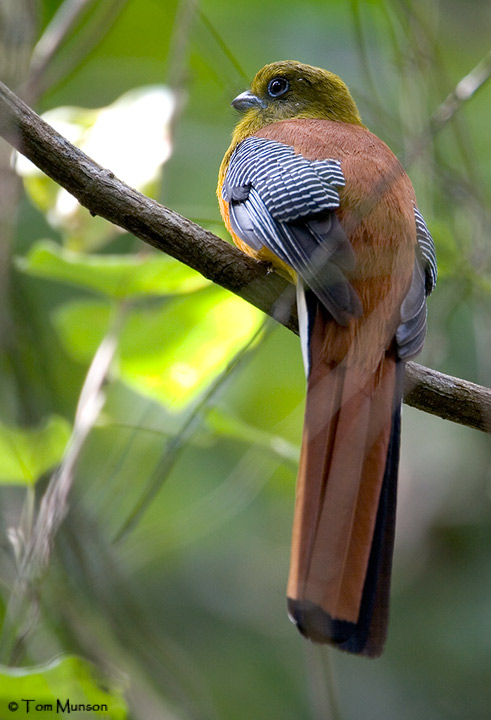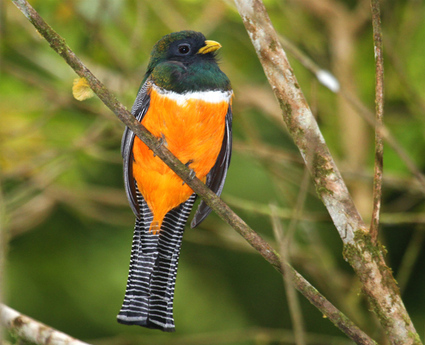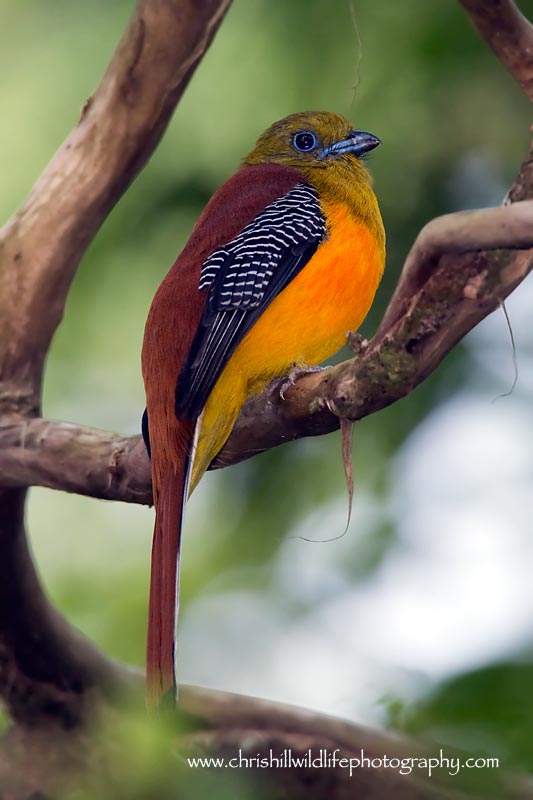
Harpactes oreskios
SUBFAMILY
Harpactinae
TAXONOMY
Harpactes oreskios Temminck, 1823, Java. Four subspecies.
OTHER COMMON NAMES
English: Malayan orange-breasted trogon, mountain trogon,
Stella’s orange-breasted trogon, yellow-breasted trogon;
French: Trogon а poitrine jaune; German: Orangebrusttrogon;
Spanish; Trogуn Pechinaranja.
PHYSICAL CHARACTERISTICS
Olive-yellow head, rich chestnut upperparts, orange breast fading
to bright yellow on upper and lower breast, white and black
undertail, white wingpanel bars, blue orbital ring and bill.
DISTRIBUTION
Southern China, Malaysian Peninsula, Java, Sumatra, and
northern Borneo.
HABITAT
Humid, lower elevation evergreen forests, open dry forest, and
bamboo forest.
BEHAVIOR
Perches on shorter trees in middle and upper canopy, alone
and in pairs.
FEEDING ECOLOGY AND DIET
Fruits and insects including crickets, grasshoppers, beetles,
ants, lizards, and various vegetable material. Occasionally feeds
on ground or in mixed-species foraging flocks.
REPRODUCTIVE BIOLOGY
Breeds January to June over range, primarily in February and
March; nests in hollow stumps, often low to ground; lays one
to four eggs, most often two or three. No information on
brood rearing.
CONSERVATION STATUS
Most common trogon on Malaysian Peninsula; not threatened.
SIGNIFICANCE TO HUMANS
None known.
Photo Gallery of - Orange-breasted trogon




 Animalia Life
Animalia Life